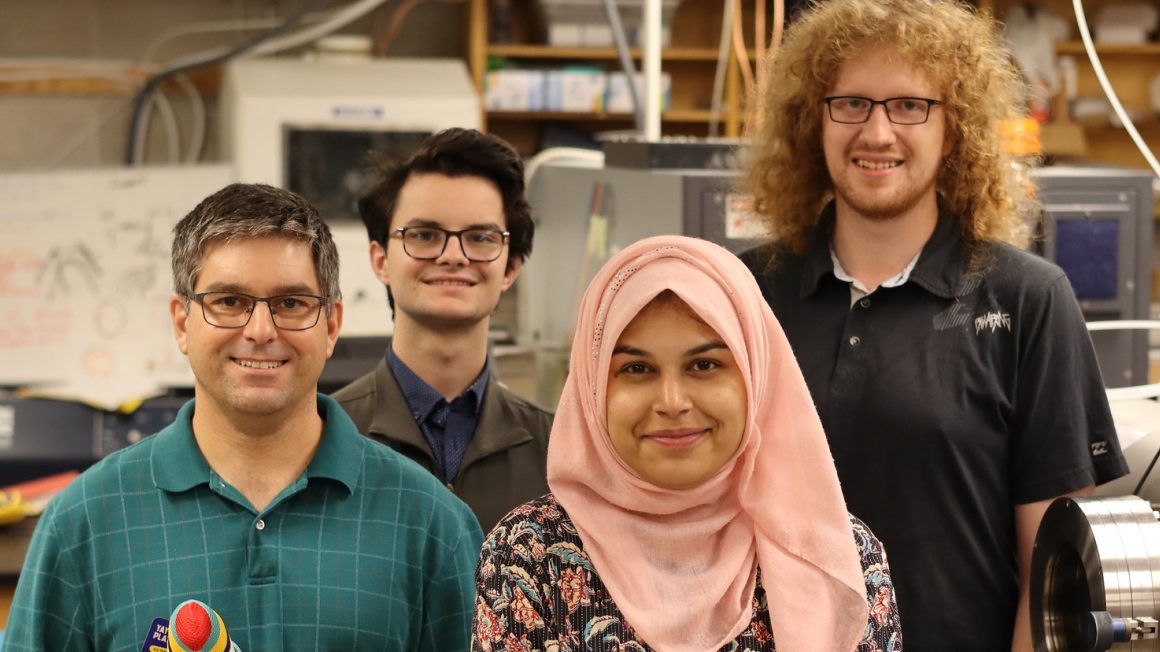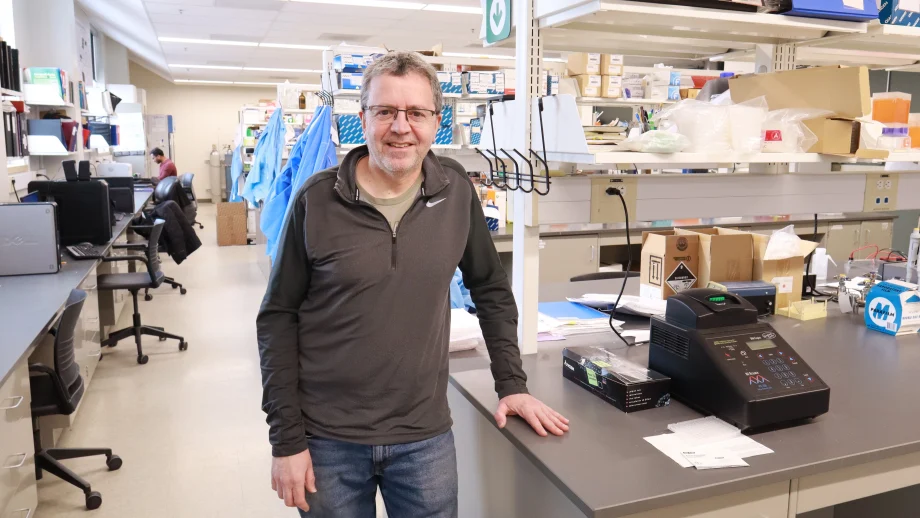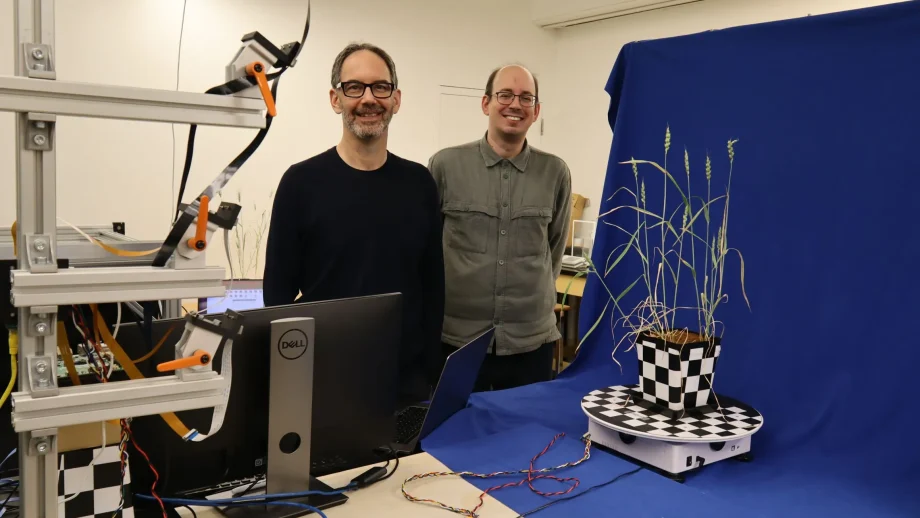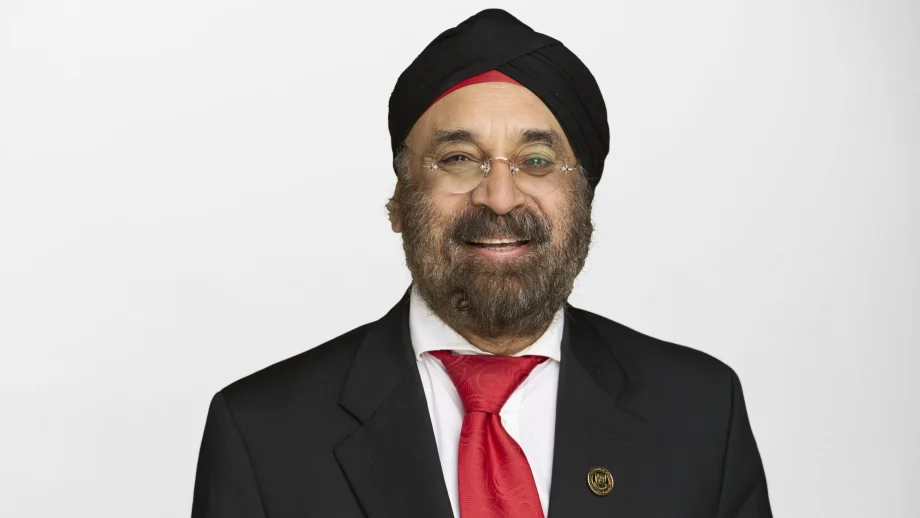Why is there more matter than antimatter in our universe? That is the question on the minds of physicists around the world, including UWinnipeg’s Dr. Russell Mammei, internationally renowned researcher in the field of nuclear physics-fundamental symmetries.
To find the answer, Dr. Mammei prefers his neutrons served cold. Using ultracold neutrons (UCN), Dr. Mammei is looking to find the answers regarding matter to help better understand our universe.
To aid him in his search, Dr. Mammei was awarded the 2024 Chancellor’s Research Excellence Chair.
UCN are very slow-moving neutrons that can bounce of surfaces just like light. Normally, a neutron would just plow through material, but because these neutrons are slow moving they can bounce off certain materials.
This facility puts UWinnipeg on the map as an international UCN guide centre, which will greatly benefit our students and UWinnipeg’s excellence in science.
Dr. Russell Mammei
Dr. Mammei is part of the TRIUMF UltraCold Advanced Neutron (TUCAN) source and electric dipole moment (nEDM) experiment, based at TRIUMF, Canada’s national particle accelerator centre, located in Vancouver, British Columbia. He leads two major subsystems: the Magnetic Shielded Room (MSR) at Vancouver and the UCN Guide Coating Facility (UGCF) being built at UWinnipeg.
The UWinnipeg UGCF lab is dedicated to applying neutron-friendly coatings to the inside of UCN guides. Dr. Mammei’s UWinnipeg UGCF team includes two undergraduate students, Thomas Hepworth, Rylen De Vries, and graduate student Abeer Zahra.
The team is creating diamond-coated tubes, or “neutron guides” to help transport the neutrons at TRIUMF. Neutron guides are basically highly polished tubes connected to the UCN source to move UCN to experiments many meters away. These tubes are manufactured on campus using a high-power laser system in the UGCF.
Pump up the neutrons
All UCN experiments need UCN that are created in a “source”, like at TRIUMF, which is a high-radiation area preventing researchers from doing experiments at the source. They need neutron guides to transport the UCN to a safe area to perform experiments, where they “pump up” neutrons for the experiments.
“It is like the water plumbing in your home,” explained Dr. Mammei. “There is a city source of water hookup under the street and tubes carry the water to your house; we do the same with UCN using UCN guides made in our lab.”
Dr. Mammei notes that the research is multidisciplinary in that they are doing material science and surface science to make thin films that will help enable world-leading fundamental neutron physics experiments.
These big questions require international collaboration and a complementary set of experiments in various fields of physics.
“By outfitting the nEDM experiment at TRIUMF with these DLC-coated tubes, they are expected to reduce the days to reach their statistical goal from 400 to 240 days at TRIUMF,” said Dr. Mammei. “This procedure also saves millions of dollars, and allows many other experiments in the same amount of time, increasing Canada science output.”
Dr. Mammei also enjoys the diversity of interaction from numerous fields, including nuclear physicists, engineers, machinists, material scientists, and surface scientists. And the students benefit from this varied collaboration that can launch them into many different careers.
Mammei team + UCN guides = Japan
De Vries, while working with Zahra, is doing his honours thesis on applying the diamond coating onto a set of UCN guides and components which will be evaluated with UCN at the Japan Acclerator Research Complex in Tokai, Japan this January. Hepworth is doing his honours thesis on a computer simulation of the experiment. Dr. Mammei’s team is planning to travel to Japan this January to perform the experiment.
Hepworth was also recently a Fellow at The European Organization for Nuclear Research, known as CERN, one of the world’s largest and most respected centres for scientific research, located in Switzerland.
“What is exciting it that other UCN facilities around the world are also interested in our UCN guides,” shared Dr. Mammei. “The PULSTAR UCN source at North Carolina State University sent a student this past summer, to observe our process. Scientists at Los Alamos National Lab, in New Mexico are also eager to get our UCN guides for their experiments. This facility puts UWinnipeg on the map as an international UCN guide centre, which will greatly benefit our our students and UWinnipeg’s excellence in science.”





